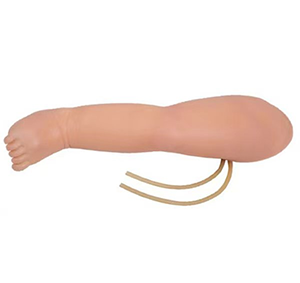Performing a venipunction on an infant's leg in an emergency situation is a highly specialized and demanding procedure. In the face of this urgent task, the operator needs to have skilled skills and precise judgment, which is the core training value that the advanced infant leg venipunction model can provide.
Real simulation, improve reaction ability
Advanced models are usually designed with highly simulated materials and anatomy, and can accurately reproduce the vein distribution and tissue touch of the baby's legs. Students can practice repeatedly during the operation process, and the whole process from identifying the piercing site to implementing the piercing can be completed in a realistic situation. This type of immersive learning allows students to react faster and make more accurate judgments when faced with real emergencies.

Advanced Infantile leg venipuncture Model
Data support to verify the training effect
Studies have shown that participants trained with highly simulated models have a puncture success rate that is more than 30% higher than those who have not practiced with models. Especially in stressful situations, the use of model training can help students adapt to clinical tension more quickly, thus effectively reducing mistakes caused by stress.
Diversity in response to unexpected needs
In a sudden situation, the vein is difficult to find or the baby is agitated, which can add complexity to the piercing. Advanced models can provide a variety of training modes, such as scenarios that simulate venous collapse or dynamic movement, to familiarize students with various complex situations and improve their coping skills.
Comprehensive value and clinical significance
Advanced infant leg venipentesis model is not only a teaching tool, but also a key facility to improve medical emergency response capabilities. By using such models, students can practice repeatedly in a risk-free environment until they are proficient, so that they can more easily respond to sudden puncture needs in clinical practice and save more lives.
In general, the advanced infant leg venipunction model, with its high simulation and multi-functional training characteristics, significantly improves the trainees' ability to operate in emergency situations, and is an indispensable and important tool in the field of medical technology education.
